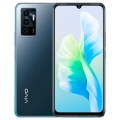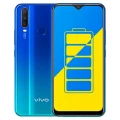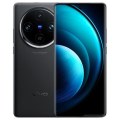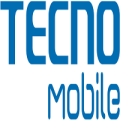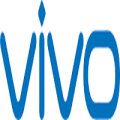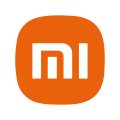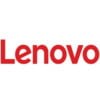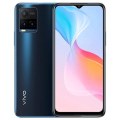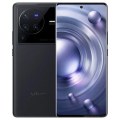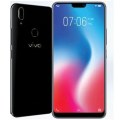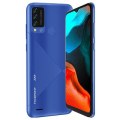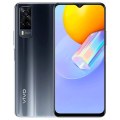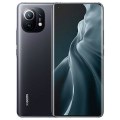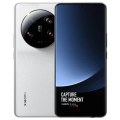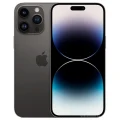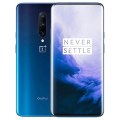Vivo X90
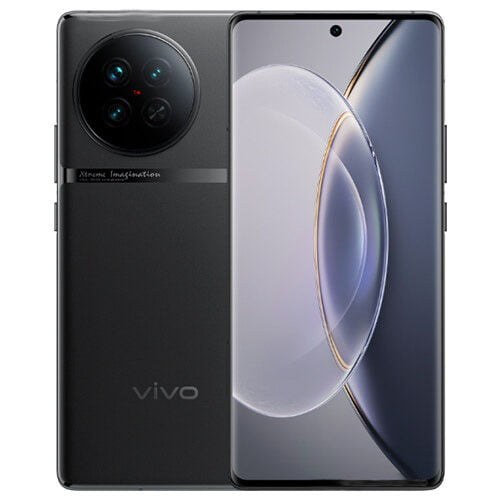


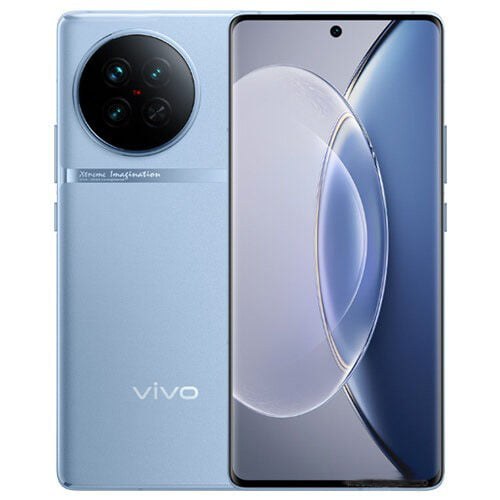
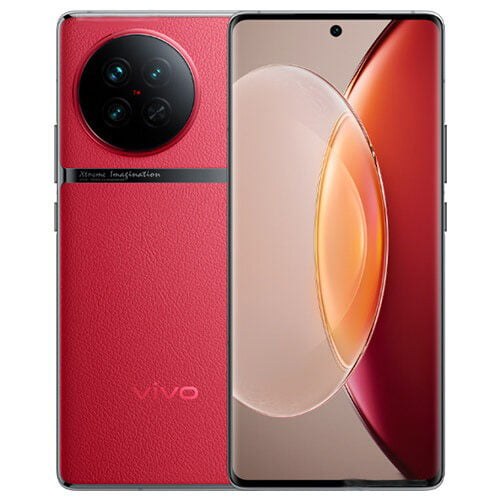
Vivo X90 Price in Bangladesh
The Vivo X90 Price in Bangladesh is approximately BDT 70,000, available in three storage variants: 128GB, 256GB, and 512GB, paired with either 8GB or 12GB of RAM. This premium smartphone is equipped with a 4810mAh battery that supports 120W fast charging, ensuring quick recharges and extended battery life. Running on Android 13, the Vivo X90 is powered by the advanced MediaTek Dimensity 9200 (4nm) chipset, offering top-tier performance. The Vivo X90 Price in Bangladesh reflects its position as a high-end smartphone, combining cutting-edge technology with fast charging and ample storage options.
Specifications
General
| Model | Vivo X90 |
| Announced | 22 November, 2024 |
| Released | 30 November, 2024 |
| Status | Available |
| Unofficial price | 8GB 128GB ৳70,000 / 8GB 256GB ৳75,000 / 12GB 256GB ৳83,000 |
Design
| Dimensions | 164.1 x 74.4 x 8.5 mm or 8.9 mm |
| Weight | 196 g or 200 g (6.91 oz) |
| Colors |
Asteroid Black, Breeze Blue, Red |
Network
| Technology | GSM / CDMA / HSPA / EVDO / LTE / 5G |
| 2G Network |
GSM 850 / 900 / 1800 / 1900 - SIM 1 & SIM 2 CDMA 800 / 1900 |
| 3G Network |
HSDPA 850 / 900 / 1700(AWS) / 1900 / 2100 CDMA2000 1xEV-DO |
| 4G Network |
1, 2, 3, 4, 5, 7, 8, 18, 19, 20, 26, 28, 38, 39, 40, 41 - International 1, 2, 3, 4, 5, 7, 8, 28, 34, 38, 39, 40, 41 - China |
| 5G Network |
1, 3, 5, 7, 28, 40, 41, 78 SA/NSA - International 1, 3, 5, 8, 28, 41, 77, 78 SA/NSA - China |
| GPRS <strong>GPRS</strong> (General Packet Radio Service) is a packet oriented mobile data service on the 2G and 3G cellular communication system's global system for mobile communications (GSM), Generally, GPRS is used for the purpose of wireless data transfer, such as sharing pictures and videos or browsing the Internet via a mobile phone connection. | |
| EDGE <strong>EDGE</strong> (Enhanced Data GSM Environment) is a wireless network technology generally considered the next step in the 2G network offers data transfer rates up to four times faster than ordinary GSM networks, Generally, EDGE is used for the purpose of wireless data transfer, such as sharing pictures and videos or browsing the Internet via a mobile phone connection. | |
| Speed | HSPA 42.2/5.76 Mbps, LTE-A, 5G |
Display
| Display Type <strong>Display Technology => </strong> A number of display technologies and types used in mobile phones => TFT (Thin Film Transistor), IPS (In-Place Switching), OLED (Organic Light Emitting Diode), AMOLED (Active-Matrix Organic Light-Emitting Diode), Super AMOLED (an even advanced version of AMOLED), Resistive Touchscreen (Resistive touchscreens contain two layer of conductive material with a very small gap between them which acts as a resistance), Capacitive Touchsceen (Capacitive touchscreen technology consists of a layer of glass coated with a transparent conductor) | AMOLED capacitive touchscreen, 16M colors |
| Size | 6.78 inches, 111.0 cm2 (~90.9% screen-to-body ratio) |
| Resolution | 1260 x 2800 pixels, 20:9 ratio (~453 ppi density) |
| Features |
120Hz, HDR10+ |
Camera
Main camera
| Camera Setup | Triple |
| Primary <strong>Camera</strong> is able to capture photographs and usually videos, The most important characteristics of a camera are the resolution (measured in megapixels), lens focus type (fixed or automatic), higher megapixel cameras are known to capture higher quality photos, but not always a good measurement of the photos quality. |
50 MP, f/1.8, (wide), 1/1.49&amp;quot;, 1.0µm, PDAF, Laser AF, OIS 12 MP, f/2.0, 50mm (telephoto), 1/2.9&amp;quot;, 1.22µm, PDAF, 2x optical zoom 12 MP, f/2.0, 16mm (ultrawide), 1/2.93&amp;quot;, 1.22µm, AF |
| Features |
Zeiss optics, Zeiss T* lens coating, Pixel Shift, dual-LED dual-tone flash, HDR, panorama |
| Video | 4K@30/60fps, 1080p@30/60fps, gyro-EIS |
Selfie camera
| Camera Setup | Single |
| Primary <strong>Camera</strong> is able to capture photographs and usually videos, The most important characteristics of a camera are the resolution (measured in megapixels), lens focus type (fixed or automatic), higher megapixel cameras are known to capture higher quality photos, but not always a good measurement of the photos quality. |
32 MP, f/2.5, 24mm (wide), 1/2.8&amp;quot;, 0.8µm |
| Features |
HDR |
| Video | 4K@30fps, 1080p@30fps |
Hardware
| Chipset <strong>Chipset</strong> is a group of integrated circuits designed to perform one or a more dedicated functions, often with real time computing constraints, Popular smartphones are equipped with more advanced embedded chipsets that can do many different tasks depending on their programming. | MediaTek Dimensity 9200 (4 nm) |
| CPU <strong>CPU</strong> (Central Processing Unit) mostly known as processors, CPU processes instructions in order to carry out certain functions that make your device operate properly. Processors are often described as the brain of computers, smartphones and tablets, Smartphones and tablets rely on processors to carry out their every task, Processors are an incredibly important factor in selecting any type of computing device, including your smartphone. | Octa-core (1x3.05 GHz Cortex-X2 & 3x2.50 GHz Cortex-A710 & 4x1.80 GHz Cortex-A510) Octa-core (1x3.05 GHz Cortex-X3 & 3x2.85 GHz Cortex-A715 & 4x1.80 GHz Cortex-A510) |
| GPU <strong>GPU</strong> (Graphics Processing Unit) is a single-chip processor designed to rapidly manipulate and alter memory to accelerate the creation of images in a frame buffer intended for output to a display, This includes things such as lighting effects, object transformations, and 3D motion. | Arm Immortalis-G715 |
| RAM (Memory) <strong>RAM</strong> (Random Access Memory) is a type of computer memory that can be accessed randomly, any byte of memory can be accessed without touching the preceding bytes that allows information to be stored and accessed quickly from random locations. RAM is the most common type of memory found in computer systems, smartphones, tablets and other electronic devices. | 8/12 GB |
| Internal Storage <strong>Internal Storage</strong> is a data storage space (flash memory) mostly used in smartphones, tablets and other electronic devices where operating system, apps, music, photos, videos, files and other user data Is stored. | 128/256/512 GB |
| Sensors <strong>Sensors</strong> are electronic components that detects and responds to some type of input from the physical environment. The specific input could be light, heat, motion, moisture, pressure and location, The output is generally a signal that is converted to use in computing systems, a location sensor, such as a GPS receiver is able to detect current location of your electronic device. |
Fingerprint (under display, optical), accelerometer, gyro, proximity, compass, color spectrum |
Connectivity
| Bluetooth <strong>Bluetooth</strong> is a wireless communications technology for exchanging data between mobile phones, headsets, computers and other network devices over short distances without wires, Bluetooth technology was primarily designed to support simple wireless networking of personal consumer devices. | 5.3, A2DP, LE, aptX HD |
| Infrared <strong>Infrared</strong> connectivity is an old wireless technology used to connect two electronic devices. It uses a beam of infrared light to transmit information and so requires direct line of sight and operates only at close range. | |
| USB | USB Type-C 2.0, USB On-The-Go |
| GPS <strong>GPS</strong> The Global Positioning System is a satellite-based radio navigation system, GPS permits users to determine their position, velocity and the time 24 hours a day, in all weather, anywhere in the world, In order to locate your position, your device or GPS receiver must have a clear view of the sky. | GPS (L1+L5), GLONASS, BDS, GALILEO, QZSS, NavIC |
| NFC <strong>NFC</strong> (Near field communication) is a set of standards for smartphones and similar devices to establish peer-to-peer radio communications with each other by touching them together or bringing them into proximity, usually no more than a few inches. |
Battery
| Battery Type <strong>Battery Type => </strong> Cell phones run on various kinds of batteries depending on the manufacturer, phone size or shape and features. There are basically four types of cell phone batteries => Lithium Polymer, Lithium Ion, Nickel Metal Hydride and Nickel Cadmium. | Non-Removable Li-Po |
| Capacity <strong>Battery Capacity</strong> is a measure (typically in Amp-hr) of the charge stored by the battery, and is determined by the mass of active material contained in the battery. The battery capacity represents the maximum amount of energy that can be extracted from the battery under certain conditions. | 4810 mAh |
| Charging Charging | 120W wired, 50% in 8 min (advertised) Reverse wired |
Vivo X90 Review – Elevate Your Smartphone Experience
Introduction
Smartphones have become an integral part of our daily lives, and each new release promises to offer something extraordinary. Enter the Vivo X90—a device that seeks to set new standards in the smartphone market. This comprehensive review will walk you through everything you need to know about the Vivo X90, from its design and build quality to its performance and value for money. If you’re a tech enthusiast, a dedicated smartphone user, or someone looking for an insightful gadget review, you’re in the right place!
Design and Build Quality
In the realm of smartphones, first impressions matter, and the Vivo X90 nails it with its sleek design and premium materials. The phone boasts a stunning glass front and back, framed by an aluminum alloy that oozes sophistication and durability. The ergonomics of the device are also impressive; it feels comfortable in hand, and the curved edges contribute to a seamless and pleasurable user experience.
The attention to detail is further evidenced by the placement of the buttons and ports. The volume rocker and power button are conveniently located, making one-handed operation a breeze. Additionally, the Vivo X90 comes with a USB-C port and retains the beloved 3.5mm headphone jack, which many manufacturers have omitted in recent models.
In terms of color options, the Vivo X90 does not disappoint. From classic black to eye-catching gradient finishes, there’s a style for everyone. These thoughtful design choices make the Vivo X90 a head-turner that doesn’t just look good but also feels premium and durable.
Display and Camera Performance
The Vivo X90 features a magnificent 6.7-inch AMOLED display that redefines vibrant and sharp visuals. With a resolution of 3200 x 1440 pixels and a refresh rate of 120Hz, every swipe and tap feels incredibly smooth. Whether you’re binge-watching your favorite shows or playing high-definition games, the display delivers crisp and immersive visuals, making every activity more enjoyable.
When it comes to the camera system, the Vivo X90 sets a high bar. The rear camera setup includes a 50MP primary sensor, a 12MP ultra-wide lens, and an 8MP telephoto lens, allowing for versatile photography options. The camera excels in capturing detailed and vibrant photos, even in challenging low-light conditions, thanks to its advanced night mode.
Video enthusiasts will appreciate the Vivo X90’s 8K video recording capability, which ensures stunning clarity and detail. Special features like the Super Steady mode and AI-based enhancements make it easier than ever to capture professional-grade videos. Overall, the Vivo X90’s camera system is a standout feature that will satisfy even the most demanding photographers and videographers.
Performance and Battery Life
Under the hood, the Vivo X90 is powered by the latest Snapdragon 888 processor, coupled with 12GB of RAM. This potent combination ensures blistering performance, whether you’re multitasking between apps or engaging in resource-intensive gaming. The phone handles everything you throw at it with ease, providing a lag-free and responsive user experience.
Battery life is another area where the Vivo X90 shines. Equipped with a 4500mAh battery, the phone easily lasts an entire day on a single charge, even with heavy usage. When it does need a recharge, the 65W fast charging support means you can go from 0% to 100% in just under an hour. Energy efficiency features further enhance battery longevity, making this phone reliable for on-the-go use.
In summary, the Vivo X90 excels in delivering top-notch performance and long-lasting battery life, making it a perfect companion for power users and gamers alike.
User Experience and Interface
The Vivo X90 runs on Funtouch OS 12, built on top of Android 11. This custom interface offers a smooth and intuitive user experience, with a plethora of customization options to tailor the phone to your preferences. From themes and fonts to icon styles and gestures, the possibilities are endless.
One unique feature that sets Funtouch OS apart is the Smart Sidebar, a convenient tool that provides quick access to your favorite apps and functions. Additionally, the Multi-Turbo mode optimizes the phone’s performance by intelligently managing system resources, ensuring a seamless and responsive experience even under heavy load.
Security is also a priority with the Vivo X90. The phone features an in-display fingerprint sensor and facial recognition, both of which are fast and reliable. These features, combined with regular software updates, ensure that your data is secure and your phone runs smoothly.
Value for Money and Comparison
Priced competitively, the Vivo X90 offers excellent value for money, especially when considering its premium features and performance. Many flagship smartphones from other brands come with a heftier price tag but lack some of the standout features found in the Vivo X90, such as the 8K video recording, 120Hz AMOLED display, and rapid charging capabilities.
When compared to competitors like the Samsung Galaxy S21 and the OnePlus 9 Pro, the Vivo X90 holds its ground remarkably well. While these competitors offer their own unique advantages, the Vivo X90 strikes a balance between price and performance, making it a compelling choice for those looking to get the most bang for their buck.
In essence, the Vivo X90 provides an impressive array of features and performance metrics that justify its price point, making it a smart investment for tech enthusiasts and casual users alike.
Conclusion
The Vivo X90 is a powerhouse that combines stunning design, exceptional display and camera quality, robust performance, and long-lasting battery life. Its user-friendly interface and competitive pricing further solidify its position as a top contender in the smartphone market. Whether you’re a tech-savvy individual or simply looking to upgrade your current device, the Vivo X90 is worth considering.
If you’re excited to experience the Vivo X90 firsthand, don’t hesitate to share your thoughts or consider purchasing through the provided link. Here’s to elevating your smartphone experience with the Vivo X90!
